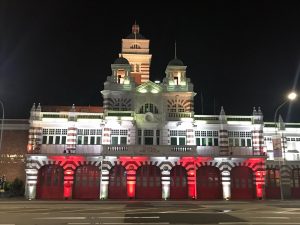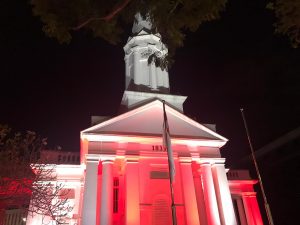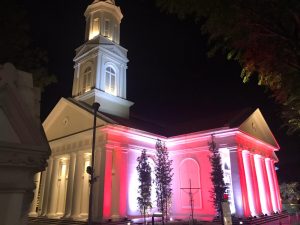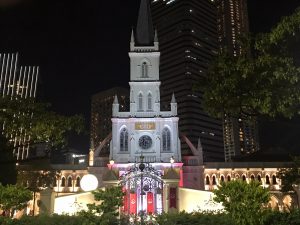– What is it that is being communicated?
Personally, I think this has been arranged to coincide with the celebration of National Day, and this year it is probably much more significant due to the unprecedented situation of a global pandemic. I think these iconic buildings might have been selected because they represent the important facets of society; religion, life-saving and cultural institutions, world class performing venue(esplanade), etc.
– What might the “curators” have to consider to plan such a transformation?
I think working with a limited palette of mainly red and white, it is not easy to make it obvious and impactful. But I think the subtleness/solemness of the whole ‘experience’ could have been intentional; as a way of urging Singaporeans to keep up the good fight, with perseverance and grit. Also, because of social distancing and a need to avoid public crowds, the ‘design’ of the experience has to be succinct, yet impactful, and not be overly ‘crowd-drawing’. The budget considerations could also be a factor in keeping the experience to a simple lights projection.
– What alternate ways could YOU imagine transforming these sites to communicate something unique or unknown about Singapore culture?
I think playing religiously-themed music softly could be interesting, especially for people from other cultures. If the place is a historic site like Central Fire Station, perhaps sound bites of historical events could be broadcasted. A virtual audio tour that is triggered on the phone with GPS could be used to allow visitors experience more relevant content.
The projection can be ‘interactive’ if visitors can send in positive messages and have them shown on the projections on these iconic buildings. This is especially great for people to give each other words of encouragement in these trying times.








